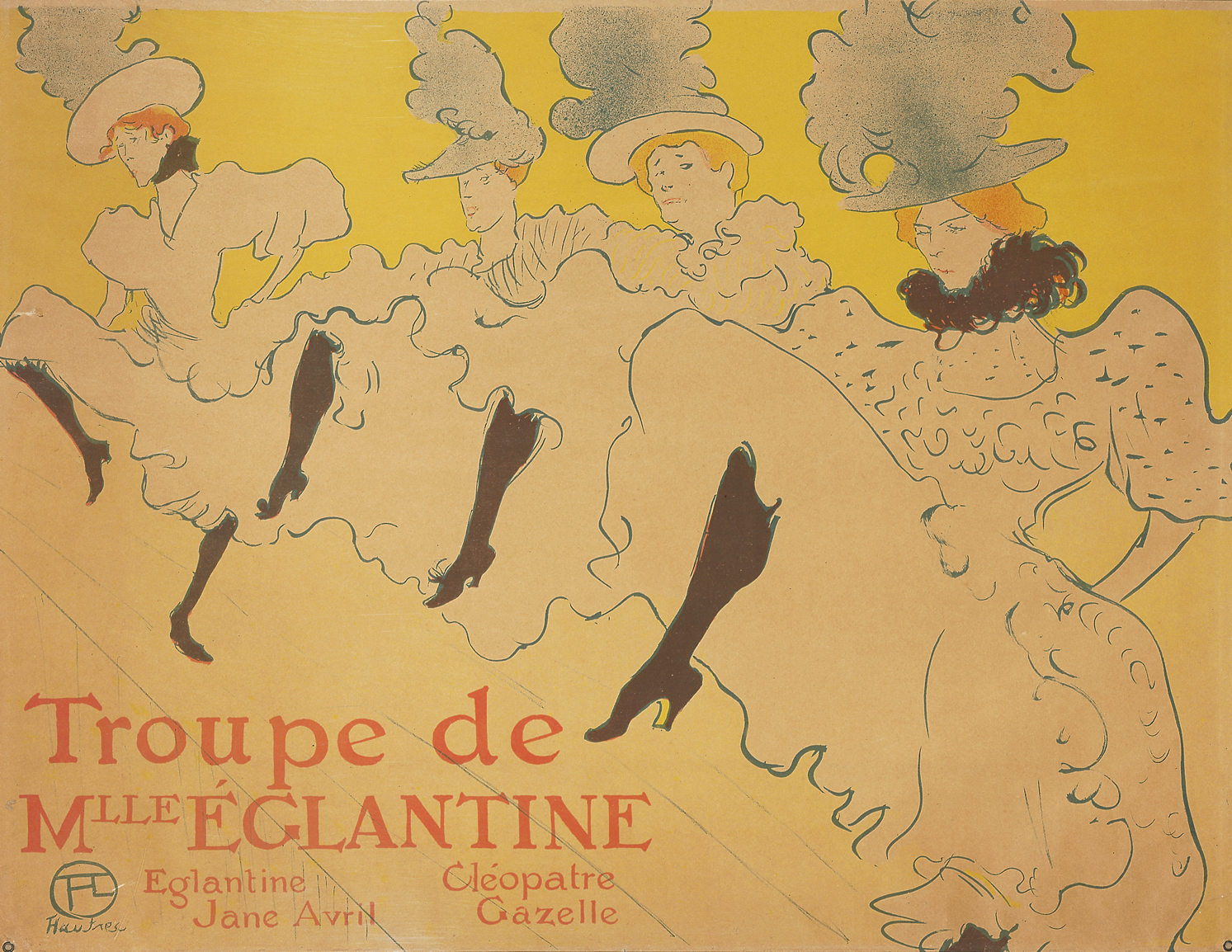Edited by Claire Leblanc and Otto Letze
At the end of the 19th century, the industrial revolution brought about a drastic social change throughout Europe, with ambivalent consequences. If industrialization dictated brutal working conditions, it simultaneously made available a large number of new consumer goods along with opportunities for leisure recreation. Taking advantage of these new assets and witnessing the rapid multiplication of entertainment opportunities provided a brief escape from the harsh reality of daily toil.
These products and opportunities needed to be promoted and conveyed and mass advertising became essential, opening up a new working ground for artists, graphic designers and printers.
This rapid development allowed artists such as Henri de Toulouse-Lautrec and his contemporaries to quickly revolutionize graphic reproduction, thus marking the beginning of a new independent artistic discipline: traditional graphic printing became poster art.
The exhibition La Boheme exhibits the exceptional lithographic work of Henri deToulouse-Lautrec, presented in close interaction with the works of his predecessors and contemporaries, who lived and experimented in the Paris of Belle Époque . This panoramic perspective allows visitors to closely follow the origins of modern mass advertising.
The presentation, at the MAN – Art Museum of the Province of Nuoro in Sardinia, is the first stage of a tours exhibition that will involve several international museums.
When Henri de Toulouse-Lautrec moved to Paris as a young adult, he quickly became a narrator of life in the French capital, a painter of fascinating demimonde and his places: the true ateliers of his work became hippodromes, circuses, prose and music theatres, cabarets and brothels.
The artist depicted the actors and spectators live in those places, with passion and without filters. Toulouse-Lautrec mocked the spectators elite , illustrating them in a caricatured way and elevating the most humble protagonists of that world – the singers, the dancers and even the prostitutes – to the stars of his works. Through his loving and bold depiction of Parisian life, the spirit of that era was forever ingrained in Toulouse-Lautrec’s work and has remained intact to this day.
To facilitate the publication of his observations on the modern and nocturnal life of Paris, Toulouse-Lautrec began experimenting with lithographic printing starting in the second half of the 1880s. He used this technique in his artistic production and inaugurated a real revolution in lithography through the large dimensions of the works, the richness of the saturated colors, the brushstrokes and the techniques mixed with chalk and spray.
In just ten years, until his death in 1901, he produced 368 lithographic prints and posters which he always considered to be of equal importance to that of his paintings and drawings. Even today his name is linked to the posters of Jane Avril, Yvette Guilbert and Aristide Bruant, which have long since become classics in the history of art.
Before Toulouse-Lautrec, Jules Chéret and Pierre Bonnard made use of the poster in advertising various shows. When Toulouse-Lautrec began to experiment with lithography, his contemporaries, established artists such as Alfons Mucha and Théophile-Alexandre Steinlen used the same technique and also managed to create true masterpieces. During the lifetime of these artists and thanks to their work, lithographic prints and posters acquired a new status , from simple advertising tools to a new artistic genre of recognized value.
Organized into six sections, it is not only Toulouse-Lautrec’s Paris that comes to life in this exhibition, but also that of his predecessors and contemporaries. Most of the posters on display are advertisements for Parisian nightlife events, usually combined with an announcement of a live show. Other posters promote different services and products – the luxury items of the working class of the time.
The entire lithographic oeuvre of Toulouse-Lautrec’s advertising posters is preserved in two museum collections in Europe. Enriched by works by Alfons Mucha, Théophile-Alexandre Steinlen, Pierre Bonnard and Felix Vallotton, La Boheme presents a set of 110 works from 22 June to 21 October 2018 at the MAN in Nuoro. The exhibition is organized in collaboration with the Musée d’Ixelles in Brussels and the Institute for Cultural Exchange in Tübingen, Germany.
A 144-page catalog accompanied by images of the works and texts by Luigi Fassi and Claire Leblanc in English and Italian is available in the MAN shop and at Silvana Editorale in Milan ( www.silvanaeditoriale.it ).


